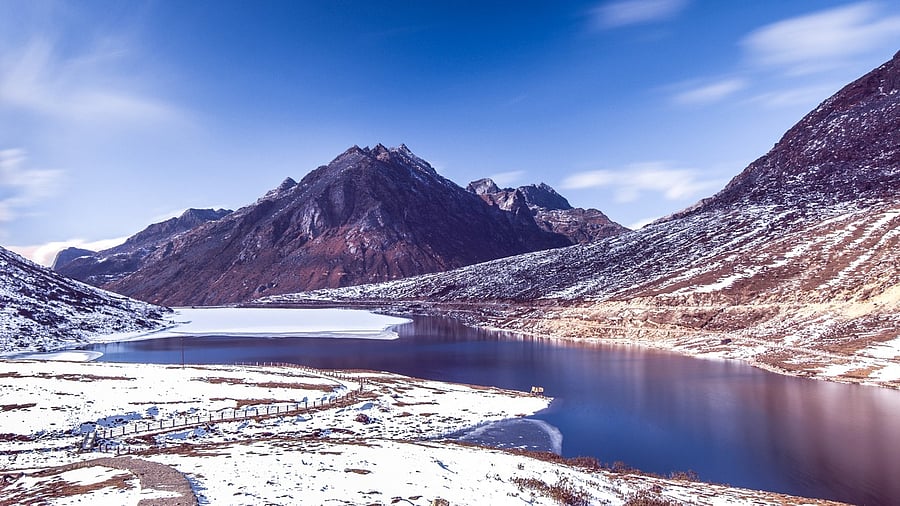
Representative image
Credit: iStock Photo
Guwahati: Glaciers in Arunachal Pradesh, the source of fresh water for over 1.3 million people in the downstream, is rapidly shrinking with a research finding that the Eastern Himalayan state lost 110 glaciers comprising 310 square kilometers in 32 years, between 1988 and 2020.
The team from Cotton University in Assam and Nagaland University, which used remote sensing and GIS, estimated an average glacier loss of 16.94 square kilometers per year during the period.
The rapid glacial retreat, the team said, have raised concerns about long-term water availability and ecological balance.
"The Himalayas, often called the 'Third Pole', contain the largest concentration of glaciers outside the polar regions. These glaciers serve as a fresh water source for more than 1.3 billion people living downstream," said the research paper, which was recently published in the peer-reviwed Journal of Earth System Science.
The results show a marked reduction in glacier coverage. In 1988, there were 756 glaciers covering around 585.23 square kilometers. By 2020, the number had dropped to 646, with the total area shrinking to 275.38 square kilometers. The researchers estimated an average glacier loss of 16.94 square kilometers per year. Smaller glaciers (less than five square kilometers) were found to be retreating faster, it said.
The Research was led by Latonglila Jamir of Nagaland University and Nabajit Hazarika, of Cotton University, Guwahati, with research scholars Vimha Ritse and Amenuo Susan Kulnu of Nagaland University.
"The consequences of glacier retreat extend beyond the immediate region. Communities that depend on glacial meltwater for agriculture and drinking water may face water shortages in the future. Initially, melting glaciers may lead to flooding and unstable river flows, but over time, reduced glacial mass will result in lower water availability. The formation and expansion of glacial lakes also pose risks, as sudden floods caused by glacial lake outbursts (GLOFs) can be destructive,” Jamir said in a statement on Wednesday. Downstream states like Assam are likely to suffer more.
Most glaciers in the region are situated between 4,500 and 4,800 meters above sea level.
Rise in temperature and other climate change impact are suspected to be the reasons behind melting of the glaciers.
"Despite concerns about glacier retreat, studies focusing on the Eastern Himalayas remain limited. There is need for continued monitoring and better climate adaptation strategies to manage water resources in the region," said Jamir.